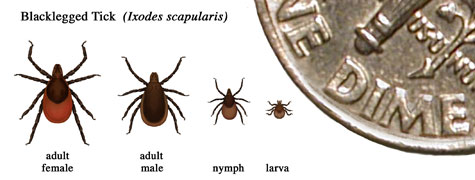 Many folks take advantage of the summer months to get outside more with their dogs, including going on long hikes and camping trips. Getting outdoors is wonderful – there is so much to see in Washington State, but being outside also means putting yourself and your pet in the path of ticks.
Many folks take advantage of the summer months to get outside more with their dogs, including going on long hikes and camping trips. Getting outdoors is wonderful – there is so much to see in Washington State, but being outside also means putting yourself and your pet in the path of ticks.
Ticks are carriers of Lyme disease – if left untreated the disease can affect the heart and central nervous system. Taking extra care at this time of year can help prevent ticks from finding their way onto you and your pup, as well as into your home.
Because ticks are small, they can be easy to miss on human bodies and on dogs. After a hike or some play time in a field with tall grass, it’s important to check for ticks, especially in hard to see places like armpits and on the scalp.

Not sure what a tick looks like? The Center for Disease Control website has a visual of ticks in each stage of development.
If a tick is found on the body, use a pair of fine tweezers to get as close to the skin as possible. Pull the tick away from the skin, being sure not to crush it. If a red bulls-eye rash is seen around the area, seek medical attention immediately. Then seek further advice of medical professionals – if caught early enough, antibiotics can often treat Lyme disease.
So, how can you tell if your dog might have Lyme disease? You may notice your pup slowing down or walking with a stiff gait. He may also lose his appetite and become lethargic. If you do notice these symptoms, have your furry kid evaluated by your family veterinarian and discuss treatment options.
In the case of people, the signs of Lyme disease include flu-like symptoms, rashes, fatigue, and even neurological problems. Diagnosis can be tricky because people often unknowingly become infected – the disease can sit dormant in the body for months and even years.
We know this first hand as Sydney, one of Rover Stay Over’s owners, has been battling the disease for several months. She was apparently bitten by a tick as a child while living in Eastern Washington and has been undergoing a variety of treatments to bring her energy level back to normal.
The good news is that there are ways to prevent Lyme disease. Take a moment to further educate yourself on prevention and treatment so you can continue to enjoy the great outdoors with your furry friend!
